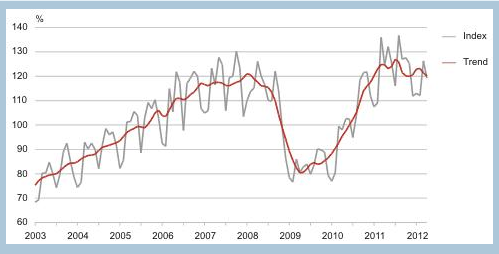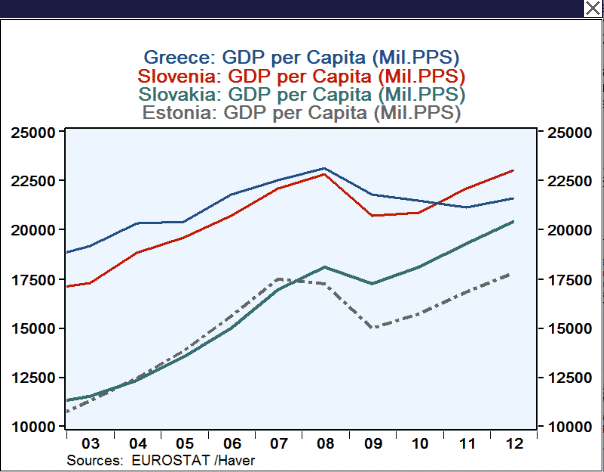The secrets of the new German economic wonder
German companies are very well prepared for takeovers in all over Europe. Many of them have strongly reduced debt in the years between 1995 and 2005, Richard Koo's called it balance sheet reduction/recession, similar to the one in Japan. Germany has already corrected the years of overconsumption, it has already lived its years of disinflation and deflation. The motto for German consumers and companies during these years was "Geiz ist geil", "To be stingy is cool" ! Germany has already built a network of suppliers and factories all over Europe. German investments were strong into the new EU members in Central Europe and the Baltics, where cheap wages and advantageous tax conditions create better opportunities for German investors. Especially Slovakia is a very important supplier for the German car industry, an elongated workbench. Supply-side reforms including debt reduction, the use of cheap suppliers and factories in Central Europe and very slow wage hikes in Germany itself have created out of Germany the maybe most competitive export nation. Thanks to these factors and (reversals of) capital flows after the financial crisis, Germany (but also Japan) could expand very strongly in the last 3 years. The following table from the German industry and trade chamber shows why German companies invested in the past into foreign countries. A main reason was to reduce costs ("Kostenersparnis") and not for market opening "Markterschließung", or sales ("Vertriebs und Kundendienst"). Recently these cost reduction objectives have been replaced more and more by sales and market opening aims.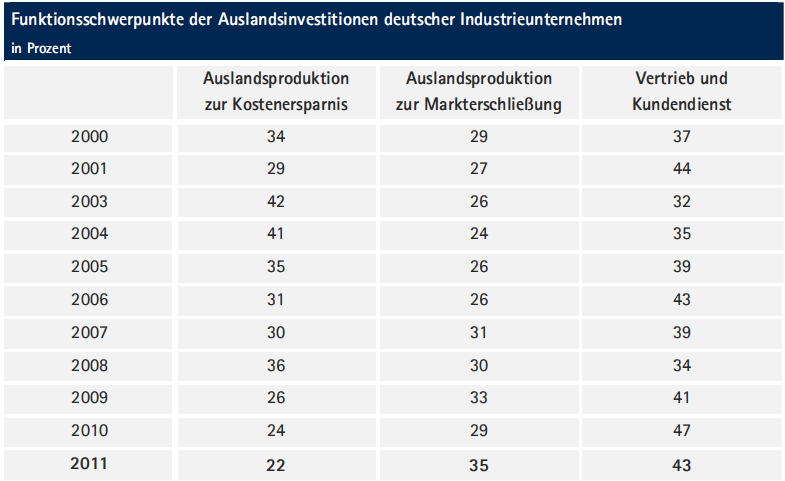 After the consumers in the PIIGS became reluctant to spend and the PIIGS firms reluctant to hire, only new investments would be a solution to the current crisis. But are German companies really interested in taking over their peers in the PIIGS, given that wages and indirect labour costs, administration overheads are often a lot higher than they are in Central Europe ?
For example minimum wages in Spain or Greece are still 2 or 3 times higher than they are in Central Europe, or even 5 times higher in Ireland.
After the consumers in the PIIGS became reluctant to spend and the PIIGS firms reluctant to hire, only new investments would be a solution to the current crisis. But are German companies really interested in taking over their peers in the PIIGS, given that wages and indirect labour costs, administration overheads are often a lot higher than they are in Central Europe ?
For example minimum wages in Spain or Greece are still 2 or 3 times higher than they are in Central Europe, or even 5 times higher in Ireland.
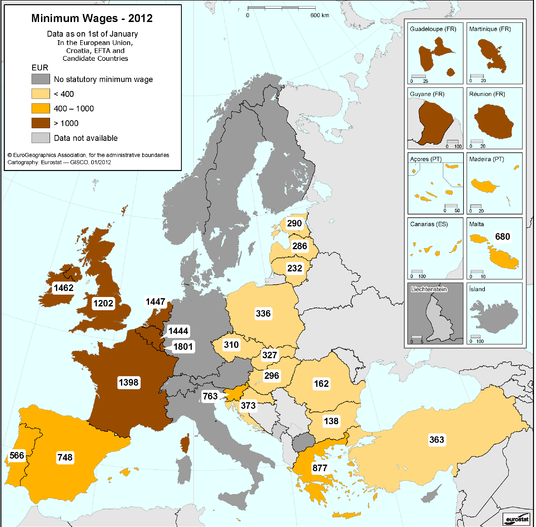 The 2011 statistics from the German industry and trade chamber shows where German firms are investing:
The 2011 statistics from the German industry and trade chamber shows where German firms are investing:
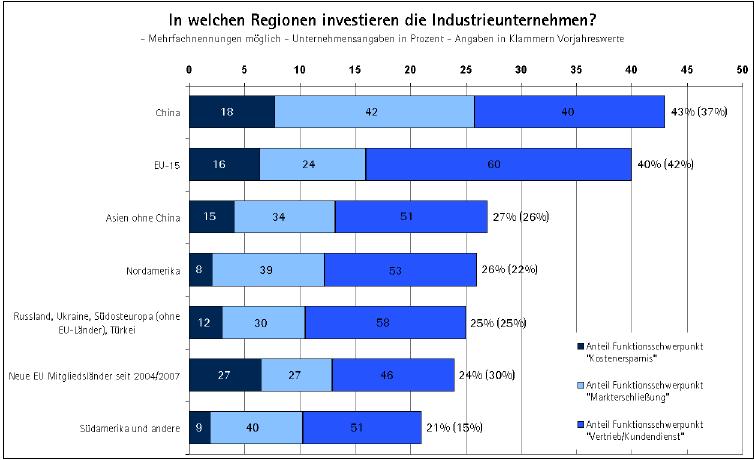 The investment to the EU-15 is taking still a big place, but 60% of the firms want to closer to the consumers ("Vertrieb/Kundendienst"), whereas on 16% want to reduce costs. Investments into new EU Member countries, however, are still strongly based on cost reduction (27%, "Kostenersparnis") and relatively high still 24% (previous year even 30%) compared with 40% into the far bigger EU-15. The idea behind the investment into China by 40% the opening of the new market ("Markterschließung").
The German foreign investments did not stop German industrial to rise, quite on the contrary:
The investment to the EU-15 is taking still a big place, but 60% of the firms want to closer to the consumers ("Vertrieb/Kundendienst"), whereas on 16% want to reduce costs. Investments into new EU Member countries, however, are still strongly based on cost reduction (27%, "Kostenersparnis") and relatively high still 24% (previous year even 30%) compared with 40% into the far bigger EU-15. The idea behind the investment into China by 40% the opening of the new market ("Markterschließung").
The German foreign investments did not stop German industrial to rise, quite on the contrary:
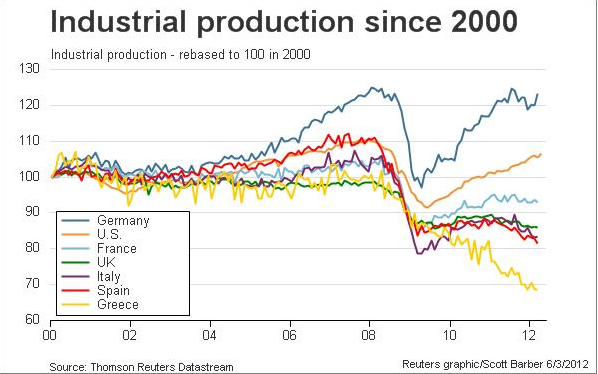 The investments into Central Europe were just complementary to the strong expansion of the rise of industrial production in Germany itself. During an even smaller timeframe than above Estonian industrial production almost doubled:
In the meantime Greece is getting overtaken by some Central European countries as for the GDP:
Full story here
Are you the author?
Previous post
See more for
Next post
The investments into Central Europe were just complementary to the strong expansion of the rise of industrial production in Germany itself. During an even smaller timeframe than above Estonian industrial production almost doubled:
In the meantime Greece is getting overtaken by some Central European countries as for the GDP:
Full story here
Are you the author?
Previous post
See more for
Next post
Tags: Bailout,China,industrial production,PIIGS,Real Estate,sector balances,Spain,Supply-Side,Swiss National Bank,Switzerland









